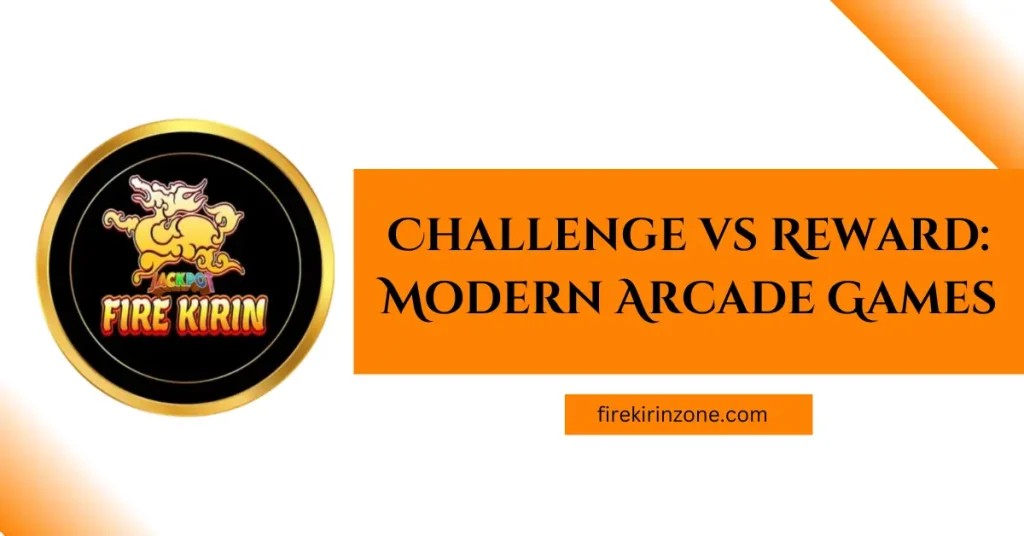Balancing Difficulty and Rewards in Modern Arcade Games
Every great arcade game walks a tightrope between challenge and reward. Push too hard, and players quit in frustration; make it too easy, and they lose interest. Modern fish-shooting titles like Fire Kirin have perfected this balance through smart algorithms that adapt difficulty in real time. The principles behind this tuning come from the same system logic explored in the Game Mechanics & Systems Hub, where hit probability, adaptive AI, and scoring math work together to create fairness without removing excitement. Ready for nonstop fun and challenge? Download Fire Kirin XYZ now and start playing!

The Mechanics of Challenge
Arcade designers know that tension drives engagement. When a player feels just close enough to victory, dopamine levels spike — the same response found in real-world competitive play.
Games like Fire Kirin use progressive scaling to maintain this state of “flow.” Early rounds offer quick wins to build confidence; later waves tighten timing windows and increase enemy movement speed. The idea is simple: satisfaction equals struggle + success.
Adaptive Difficulty Systems
Under the hood, most modern arcade titles employ Dynamic Difficulty Adjustment (DDA) — algorithms that analyze how you play and modify the environment accordingly.
- Struggling? The spawn rate of small, easy targets rises.
- Performing well? Boss fish and high-value targets appear more frequently.
These systems don’t cheat; they simply ensure sustained engagement. A consistent sense of challenge keeps both newcomers and veterans hooked — no matter their skill level.
Reward Scaling and Payout Logic
As difficulty rises, so do the potential rewards. Fire Kirin’s design follows the “risk-reward symmetry” model: the harder the target, the higher the payout multiplier.
You might notice this during boss waves or timed events — tougher enemies yield greater coin ratios, but they also demand sharper aim and stronger weapon management.
Developers constantly test these payout tables to ensure fairness, maintaining trust while preserving excitement.
Interestingly, this balance also explains why certain fish feel more resilient than others. Their resistance values and payout multipliers are linked — a subject explored further in Why Some Fish Are Harder to Kill — Multiplier & Resistance Explained, which dives into the physics and probability behind target durability.
The Mathematics of Engagement
Behind the flashing lights and smooth animations, engagement is a measurable equation:
Engagement = Challenge × Reward ÷ Frustration
Developers run simulations using player-behavior data to keep this ratio ideal. Too much challenge without sufficient reward leads to burnout; too many easy wins reduce replay value.
By adjusting probability curves and drop rates, the system sustains what feels like “earned progress.” Every victory seems personal, yet statistically, it’s the result of precisely tuned mechanics.
Player Skill as a Variable
While algorithms control pacing, player skill defines progression speed. Fire Kirin’s design ensures that experienced players naturally face higher intensity — faster waves, smaller targets, and tighter timing windows.
This self-balancing system keeps the competitive spirit alive. It mirrors traditional arcade machines, where the better you performed, the faster the screen filled with challenges.
In short, your mastery becomes the game’s difficulty setting.
Event Cycles and Reward Bursts
Modern fish-shooting games introduce event cycles — periodic windows when payout ratios increase. These bursts serve two functions:
- Reward retention. Active players feel recognized for consistency.
- Encourage engagement. Returning users rejoin during event windows for bigger wins.
This cyclical rhythm is how online arcades create long-term loyalty without manipulating odds — a key distinction between dynamic design and predatory systems.
Maintaining Fairness in Difficulty Curves
To protect player trust, top platforms use transparent progression curves — difficulty rises smoothly, never spiking without reason.
Fire Kirin achieves this through incremental AI behavior: fish clusters grow denser, not impossible; spawn timers shorten gradually, not abruptly.
This smooth ramp ensures players learn before they’re tested, keeping challenge aligned with skill growth.
Designing for Flow, Not Frustration
The hallmark of great arcade design is “flow” — the psychological state where concentration and enjoyment merge.
Developers tune frame timing, sound feedback, and visual pacing to support this state. For instance, rhythmic firing sounds subconsciously guide timing, while subtle lighting cues signal reward triggers.
Balancing these cues keeps players motivated, even through tough streaks. It’s less about winning every round and more about feeling capable of winning the next.
Conclusion
Balancing difficulty and rewards is both art and algorithm. The best games don’t manipulate players — they respect them, using data and psychology to create genuine satisfaction. Fire Kirin exemplifies this balance: every miss teaches timing, every hit reinforces mastery. When fairness meets excitement, engagement becomes inevitable. And when you understand how systems measure resistance and multipliers, you’ll see that even the toughest fish have a logic behind them.
FAQs
